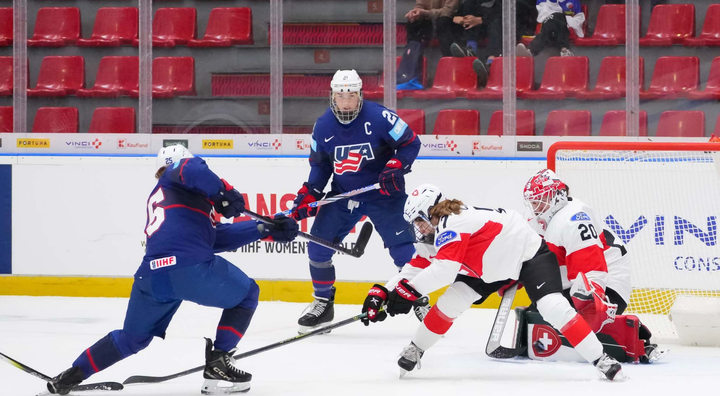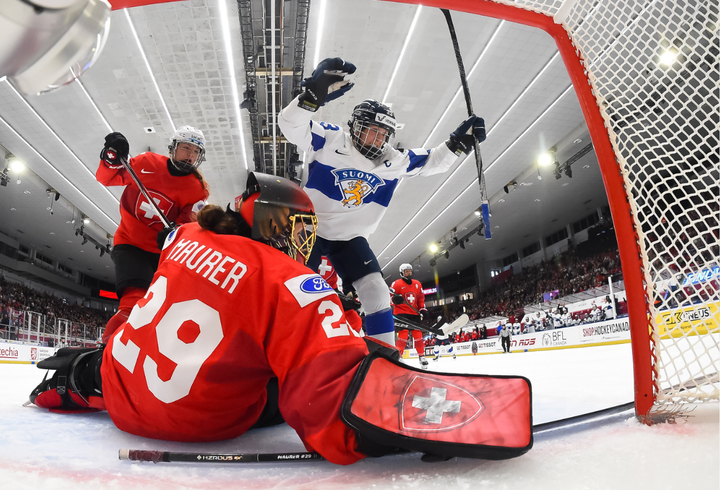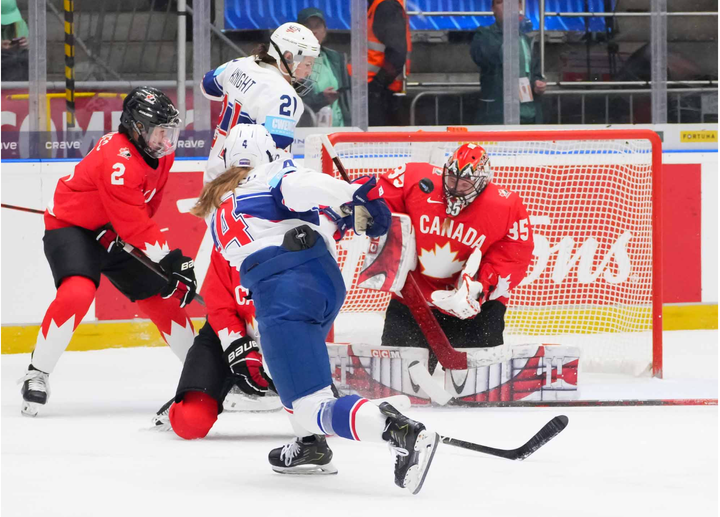Using the Premier Lacrosse League as a blueprint for #ForTheGame
How a lacrosse revolution could pave the way for a women’s hockey league like no other
Stop me if you’ve heard this before: one sport, multiple professional leagues in North America, and a revolution that could change it all.
No we’re not talking just about women’s hockey. We’re talking about men’s professional lacrosse. The blueprint for their newest league could be the groundwork for the next iteration of women’s professional hockey.
Related
A familiar issue
Men’s professional lacrosse has a #OneLeague problem. Well, sort of.
Right now, there are three major professional men’s lacrosse leagues in North America: Major League Lacrosse (MLL), National Lacrosse League (NLL), and the newly formed Premier Lacrosse League (PLL).
Unlike women’s hockey, two of the leagues play slightly different versions of the same game as the MLL is outdoor while the NLL is indoor. Their seasons only overlap briefly. But like women’s hockey, the players are underpaid and under marketed, even though lacrosse is one of the fastest growing sports in America.
The third professional men’s lacrosse league — the PLL — was launched this past fall with play starting the first week of June. The league is a lacrosse revolution, formed by players with a unique business model. It is poised to empower players in a way that North American sports has never seen before.
And if it works, it’s a model that would fit women’s hockey, too.
The Premier Lacrosse League
Paul Rabil is the most recognizable face and name in men’s lacrosse. In his MLL and NLL careers he has three combined championships, 12 combined All Star games, and two MVP titles. You can imagine why an athlete so dominant and talented might be frustrated by the fact that he could make, at the absolute most, $35,000 per MLL season. Even back when he was playing in both leagues, he could only max out at $69,000 total, playing almost year-round with very little offseason. For context, this year’s minimum salary for an NHL player was $650,000. On top of that, MLL players are not provided with any benefits or health insurance, and there’s no union. Things aren’t much better in the NLL. Rabil recognized the power that a large enough pool of players would possess. He rallied six teams of 120 top players to join him in the PLL.
Rabil’s new league was officially launched in October. It’s the first league in North America to offer players equity stakes in the business itself. Players will also be full-time employees with salaries and health care coverage.
The PLL operates on a tour-based model and will visit fourteen cities in its inaugural season (thirteen American cities and Hamilton, Ontario). The season will run from the beginning of June to September 21 with all games will be played on the weekend.
From the jump it’s more accessible than either of the other two leagues. The PLL nailed down a broadcast deal with NBC Sports to air all of its games. The touring model will allow the league to introduce a growing sport to new markets while also taking advantage of markets where lacrosse is already popular, like those along the East Coast. Rabil’s connections and the popularity of the sport made grabbing investors possible, and the league is certainly set up to succeed, especially with the clout that comes along with a major TV deal and arguably the best players in the sport standing behind him.
Making it Work for Women’s Hockey
We may represent different teams, leagues and countries but collectively we stand as one. #ForTheGame pic.twitter.com/LtqKYToNqW
— Shannon Szabados (@ShannonSzabados) May 3, 2019
Let’s say that, like the PLL, a new women’s league would want about six teams. Six 23-player rosters would put the total at 138 players necessary to make this work. As of right now, The Ice Garden’s spreadsheet of players who are involved in the #ForTheGame movement is hovering right around 200, so finding 138 players certainly seems doable. The league could either follow the PLL’s lead and tour North America, or have teams based in certain cities like other traditional leagues. Given the makeup of the players involved in the movement, it would be smart to split things closer to 50/50 in the United States and Canada, whether that means 3 American and 3 Canadian teams, or picking a number of Canadian cities to tour to.
If there were 6 teams based in specific cities it could look like this: Calgary, St. Paul, Boston, Montreal, Toronto and Buffalo.
If the league followed a touring model and played 14 weekends, it could look like this: Detroit, Calgary, St. Paul, Madison, Chicago, Pittsburgh, Montreal, Boston, Quebec City, Winnipeg, New York City, Ottawa, DC and Toronto.
Securing investors and sponsors would be the biggest hurdle for this venture, but it’s by no means out of reach. The players involved in #ForTheGame include every single national team player from both the American and Canadian teams. That means names like Knight, Poulin, Coyne-Schofield, Duggan, Spooner, and Szabados. Many of these players have sponsors and connections to companies and organizations that would make great investors if they can be convinced, companies like Bauer, CCM, Adidas, Red Bull, Dunkin’, and leagues like the NFL and NHL.
She Breaks Barriers: @RJohnst6.#teamadidas pic.twitter.com/GkQwXd4Ef5
— adidas Hockey (@adidashockey) March 28, 2019
The other huge and necessary step would be a broadcasting deal. Whether that means local deals or a national deal, television or online streaming, some way or another a new league would need to get in front of people’s eyeballs. There are plenty of options for this, and with social media sites like Twitter and Facebook increasingly moving into the sports broadcasting industry, at first blush, it feels doable.
This is especially true after the 2018 Olympics, which spiked nationwide interest in American women’s hockey. Even the controversy of this year’s World Championships can work in the players’ favor, because for good or bad, people have been talking about the sport more than ever.
The players also aren’t alone. There’s a sizable list of names who could offer help as coaches, advisors, officers, and so on, many of them former players themselves. For example, Patty Kazmaier award-winner and 4-time Olympic medalist Angela Ruggiero has an MBA from Harvard University and is a member of the International Olympic Committee. She’s a Hockey Hall of Famer and one of the best-known American players this side of Cammi Granato. Cassie Campbell is a broadcaster for Sportsnet and a three-time Olympic medalist with experience serving as an advisor to the CWHL. Gillian Apps is another three-time Olympian finishing up her MBA at Dartmouth. Meghan Duggan coached a season at Clarkson University before the Pyeongchang Olympics. Courtney Birchard-Kessel coached the last Furies team to a wild season finish. Caroline Ouellette now has experience coaching at a league, college, and international level. The strength of this new league possibility doesn’t just come from the players who could play in the league.
One of the other reasons the PLL idea might work for women’s hockey is that, should the league play over the summer, it fills an interesting niche. The Stanley Cup finals end in late May or early June and the NHL doesn’t begin again until early October. There’s no professional or college hockey over the summer, so playing through the summer would make it easier to secure broadcasting deals, rinks, and hockey fans who might just be a little bit bored of golf and baseball. Playing in the summer also makes it easier for college graduates to join in without juggling finals and graduation, and opens up the possibility that NCAA coaches who currently play, like the Riveters’ Kelly Nash or the Whale’s Jess Koizumi, could continue to do both.
The Connection Is There
This is almost definitely an idea that’s on the players’ radars. Both Hilary Knight and Meghan Duggan have posted on their Instagrams about the PLL over the past two days, as they’ve received gear from the league in the mail. Karell Emard even acknowledged the idea on her Twitter last week.
Hey @SeanCof thanks for the idea and support from you and your company!! https://t.co/b1tsD4fKlm
— Karell Emard (@KarellEmard) May 2, 2019
With the NHLPA’s lukewarm statement and the league office’s hesitance to get involved, it might be time for the players to do more than wait for someone else to step in and build a league around them. In fact, it might be better for the sport — and female athletes generally — if the players find a way to build it themselves.





Comments ()